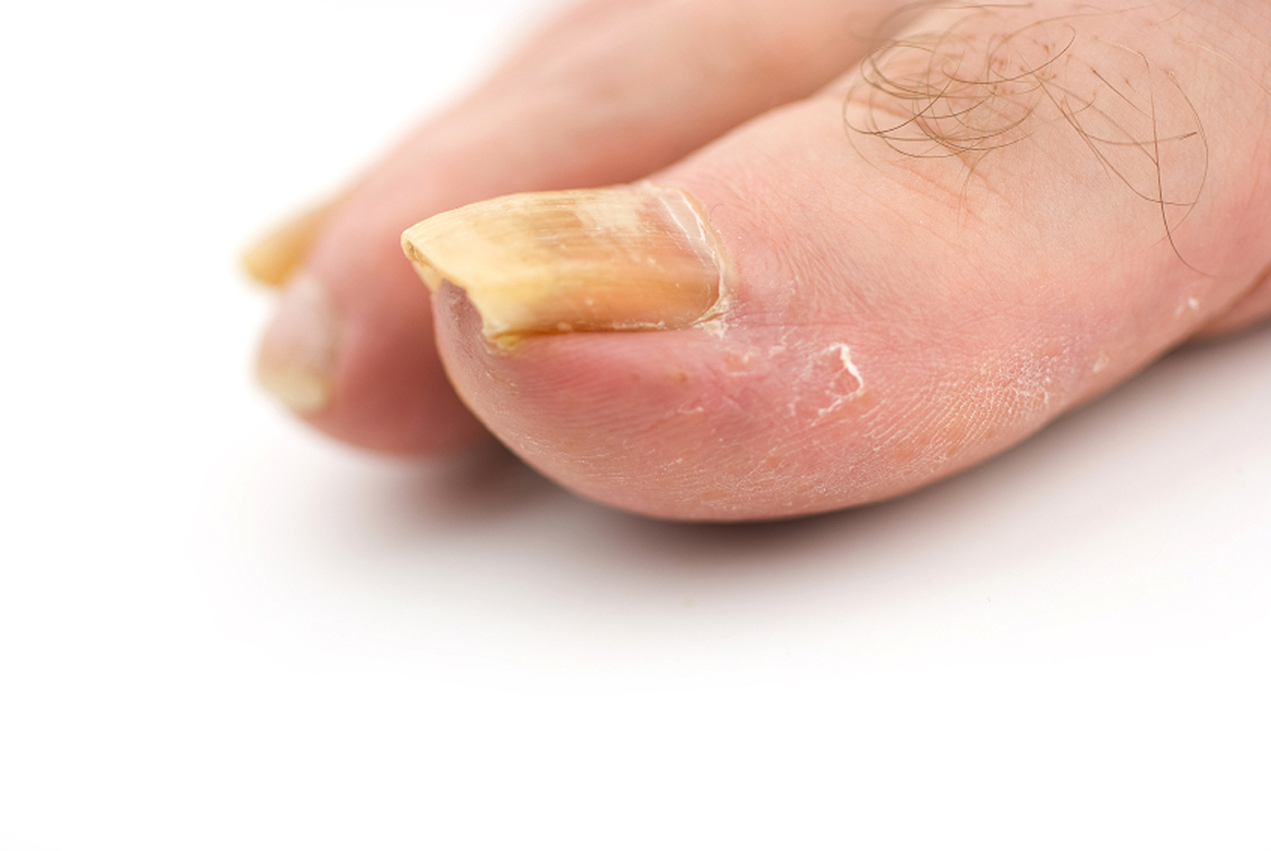Toenails may become aggravated, thickened and discoloured due to many factors including physical trauma, fungal infections, bacterial infections, psoriasis or dermatitis, advanced ageing and systemic disease, including; lung, heart, kidney, liver and thyroid disease.

Toenail Problems
Curved nails or involuted nails
Curved, or involuted, nails have a higher curveature than normal nails. These can be so curved that the edges can dig quite deeply into the skin, pressing hard against it. This can lead to the nail piercing the skin and causing ingrown toenailsthat can be quite painful and can result in infection. Things that can aggravate involuted nails include; ill-fitting shoes, tight socks and incorrect nail cutting (especially down the sides of the nail).

Onychomycosis (tinea unguium) or “Nail Fungus”
Onychomycosis is also known as a fungal infection of the toenail. This results in discolouration, thickening, crumbling, chalkiness and even malodour of the affected nail. Fungal infections are contagious and are generally spread in public “wet areas” such as public showers, spas and pools.
People with diabetes or suppressed immune systems are at an increased risk of fungal infections. Other risk factors include wearing tight occlusive footwear, repeated trauma to the nail bed during physical activity, communal showering, family history and increasing age.
There are many forms of treatment, however, it is highly recommended for an assessment by a podiatrist at Elite Podiatryprior to commencing any treatment.
Onychophosis
Refers to the buildup of ‘dead skin’ underneath and around the nail.
Onychogryphosis or “Ram horn nails”
Onychogryphosis is the generalised thickening of the nail. It can also become discoloured slightly and is usually is the result of an injury to the nail. This can be due to something as simple as continual use of ill-fitting footwear, repeated knocks (eg. during sports/exercise), long-term neglect or dropping something on the nail. Unfortunately, once damaged, it will not change.
The best way to manage this condition is regular nail care treatment from your podiatrist at Elite Podiatry.
Yellow toenails or nail stains
Nail stains can occur from a number of things including long term use of nail polish, tobacco, chemicals and some medications. In most cases, the stained nail will grow out as long as the cause is resolved.
It is always recommended to have an assessment by a podiatrist at Elite Podiatry as it can also be the sign of something more sinister.

Onycholysis or “Lifting nails”
Onycholysis is the lifting of the nail from the nail bed. It is almost always pain-free and has several causes including the following:
- Trauma
- Conditions, deficiencies or illnesses (eg. Iron deficiencies, hyperthyroidism)
- Skin diseases (eg. Psoriasis)
- Chemicals
- Prolongued water exposure
- Infection
It is recommended for an assessment by a podiatrist at Elite Podiatry for an appropriate assessment.


